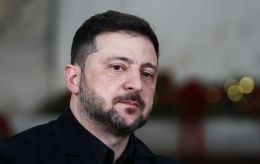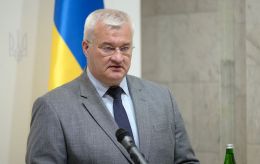Ramstein and sanctions: Chronicle of West aiding Ukraine in war with Russia
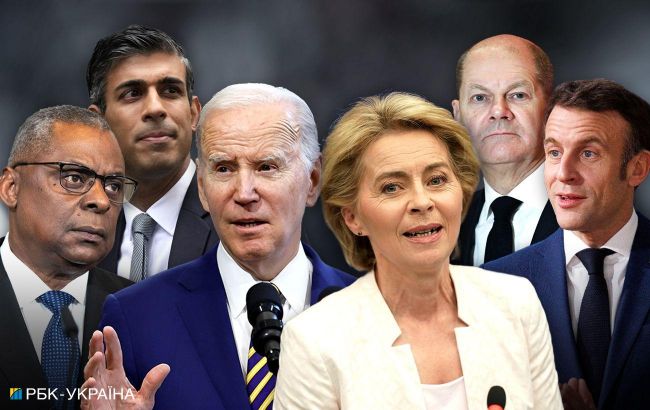 Western leaders help Ukraine with weapons and weaken Russia with sanctions (RBC-Ukraine collage)
Western leaders help Ukraine with weapons and weaken Russia with sanctions (RBC-Ukraine collage)
Western partners are helping Ukraine fight since a full-scale Russian invasion in various formats. This includes coordinating arms supplies and sanctions policy.
Read about the decisions of the Contact Group with the unofficial name Ramstein and sanctions against Russia in the article by RBC-Ukraine.
Sources used: Wikipedia, ArmyINFORM, Facebook of Defense Minister Rustem Umerov, Telegram of the Ministry of Defense of Ukraine, EU Council, the US Treasury, the UK government, Kyiv School of Economics (KSE).
Beginning of Ramstein: Transition to NATO weapons and key announcements for 2022
The Contact Group on Ukraine's Defense was created in response to the Russian invasion. It meets to synchronize military assistance. The group was informally named Ramstein after the US Air Force base in Ramstein-Miesenbach, Germany, where the first meeting was held.
 Photo: Main announcements of Ramstein-format meetings (infographics by RBC-Ukraine)
Photo: Main announcements of Ramstein-format meetings (infographics by RBC-Ukraine)
The cooperation began with a meeting on April 26, 2022, at which the allies mainly discussed how and what they could do to help Ukraine. At the same time, the principle of "assistance to all necessary as soon as possible" was formulated, over 30 countries announced that they would allocate more than $5 billion for the first stage, and Germany announced its readiness to supply Gepard self-propelled anti-aircraft guns.
After the second Ramstein, Denmark announced the supply of Harpoon anti-ship missiles and launchers, and the Czech Republic announced tanks and attack helicopters. Italy, Greece, Norway, and Poland announced artillery systems and shells in the calibers that were in service with Ukraine at the time.
The third meeting took place on June 15 against the backdrop of street battles for Sievierodonetsk (Luhansk region). It resulted in a statement about Ukraine's gradual transition to NATO weapons, the supply of long-range multiple launch rocket systems M270, HIMARS, MARS II, Brimstone missiles, Mi-17 helicopters, and M777 howitzers. A month later, on July 20, the United States announced a $400 million package with a thousand high-precision artillery munitions and 4 additional HIMARS systems. As of July, 30 of the 50 participating countries were supplying lethal weapons. Many details were not disclosed, but it became known about plans to supply M113 armored personnel carriers.
The fifth Ramstein was marked by the preparation of a long-term support strategy. The United States promised to provide howitzers, HARM anti-radar missiles, 100 HUMVEE armored vehicles, infantry fighting vehicles, and Excalibur precision-guided missiles. Norway - 160 AGM-114 Hellfire anti-tank missiles, the UK - over 120 vehicles for the transportation of special equipment.

Photo: The first Ramstein meeting in April 2022 (twitter.com/SecDef)
The sixth meeting on October 12 was preceded by a massive Russian attack on Ukraine's energy sector. In this regard, for the first time, it was announced that Ukraine would receive NASAMS, PzH 2000 self-propelled howitzers, and the first 6 HAWK air defense launchers. There was information about the possible transfer of LRU M270, the French counterparts of HIMARS on track. Then it became known that Germany had delivered the first IRIS-T air defense systems.
At the last meeting in 2022, on November 16, Poland announced the supply of artillery and short-range air defense, Germany - shells and missiles for MARS II systems, and Spain - the transfer of two more HAWK launchers. Before that, the United States announced for the first time the delivery of Avenger air defense systems. The year ended on a relatively upbeat note after Ukraine's successful counteroffensive in the Kharkiv and Kherson regions. After the meeting, then Chairman of the Joint Chiefs of Staff Mark Milley emphasized that Russia had made a strategic mistake and had already lost.
"All the goals of the invasion have failed... It is obvious that the Russian will to war does not match the Ukrainian will to fight on the battlefield," he said.
Qualitative growth. Patriot, Western tanks, F-16 coalition, and ATACMS missiles
In early 2023, Russia continued to launch massive air strikes and shifted its focus to Donbas, advancing on Soledar and Bakhmut. It was already clear that Ukraine would need heavier equipment. On the eve of the landmark Ramstein 8 meeting, which unblocked this issue, the allies announced plans to supply American Bradley fighting vehicles, German Marder, French AMX-10 RC "wheeled tanks" and British Challenger 2 tanks.
The meeting itself took place on January 20. For the first time, the partners confirmed that the United States, Germany, and the Netherlands would provide Patriot air defense systems (which can shoot down ballistic missiles) to Ukraine. One of the central topics was the transfer of Western tanks. A few days later, US President Joe Biden said that Washington would send 31 Abrams, and German Chancellor Olaf Scholz agreed to the transfer of Leopard 2s. In addition, the partners promised to transfer Caesar self-propelled howitzers, AHS Krab, and FV430 Mk3 Bulldog armored personnel carriers.
As a result of the ninth meeting on February 14, it became known that France and Italy were working on providing SAMP-T air defense systems, and Germany, Canada, Poland, Portugal, Spain, Norway, Denmark, and the Netherlands were working on supplying Leopard tanks. Details were not disclosed as Ukraine was preparing for the 2023 counteroffensive and President Volodymyr Zelenskyy said that "not everything can be reported publicly."
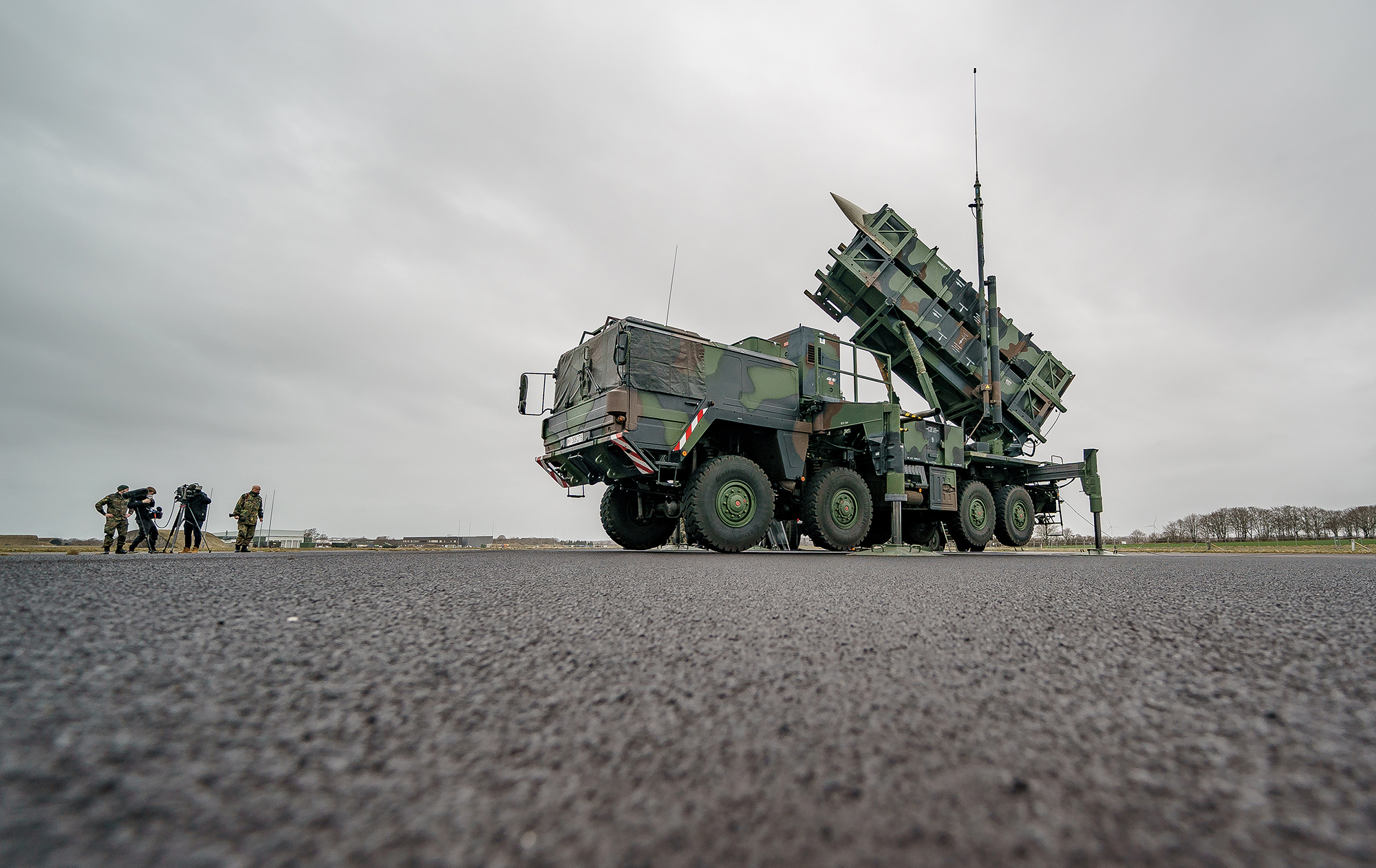 Photo: In early 2023, the partners confirmed the upcoming delivery of Patriot air defense systems (Getty Images)
Photo: In early 2023, the partners confirmed the upcoming delivery of Patriot air defense systems (Getty Images)
A month later, at the tenth Ramstein, it was announced that further air defense strengthening and the formation of an "armored fist" would be carried out. Nine countries pledged to supply 150 Leopard tanks and other armored vehicles, while Norway and the United States pledged two NASAMS systems. Slovakia announced that it was ready to transfer 10 MiG-29 fighters (to be decommissioned by the fall), and Poland announced the delivery of the first 4 MiG-29s (the total number was not specified).
At a meeting on April 21, the Tank Coalition was finally formed. The partners agreed to build a Leopard service center in Poland, and the United States suggested that it could provide more than 31 Abrams. In addition, they agreed to supply shells, fuel, ammunition, Prairie Gun Works sniper rifles, missiles for ATGMs, and modular bridges.
On May 25, at Ramstein 12, the creation of a Fighter Coalition led by Denmark and the Netherlands was announced. It was immediately noted that it would start training pilots on F-16s. In addition, the United States promised more NASAMS SAMs, and Canada promised more than 40 AIM-9 Sidewinder air-to-air missiles. Before that, the UK handed over a batch of Storm Shadow air-to-ground missiles.
"We need a secure sky. We thank everyone who joined this process and the formation of the air coalition. We will see the Fighting Falcon (F-16 - ed.) in the Ukrainian sky," President Zelenskyy said.
At a meeting on June 15, Denmark and the Netherlands pledged to provide 14 Leopard 2 tanks, four more units will come from Spain, and Sweden announced that Ukrainian pilots will also test Gripen fighters. The United States announced ammunition for HIMARS, 10 Stryker armored personnel carriers, and 15 Bradley infantry fighting vehicles.
At the fourteenth Ramstein, on July 18, it was announced that pilots would be trained on F-16s in Denmark and at a base in Romania (not before the end of 2024). A group of countries announced aid worth €1.5 billion, including SCALP (Storm Shadow) missiles, Patriot launchers, and Leopard tanks. The United States announced Vampire air defense systems, Phoenix Ghost, and Switchblade kamikaze drones.
At a meeting on September 19, Ukraine, Estonia, and Luxembourg launched an IT coalition (to create a unified digital combat management ecosystem). The United States announced that Abrams tanks were "about to arrive on the battlefield," Denmark pledged to supply 15 T-72EA tanks and 30 Leopard 1 tanks, and Poland - more than 100 infantry fighting vehicles. The next meeting, on October 11, was attended by President Volodymyr Zelenskyy for the first time, and it was at Ramstein 16 that it became known that Denmark would deliver F-16s in early 2024, and Belgium in 2025. In addition, Lithuania promised two more NASAMS air defense systems and the United Kingdom promised the latest MSI-DS Terrahawk Paladin anti-drone air defense system. A few days later, Ukraine used the secretly transferred ATACMS long-range missiles for the first time.
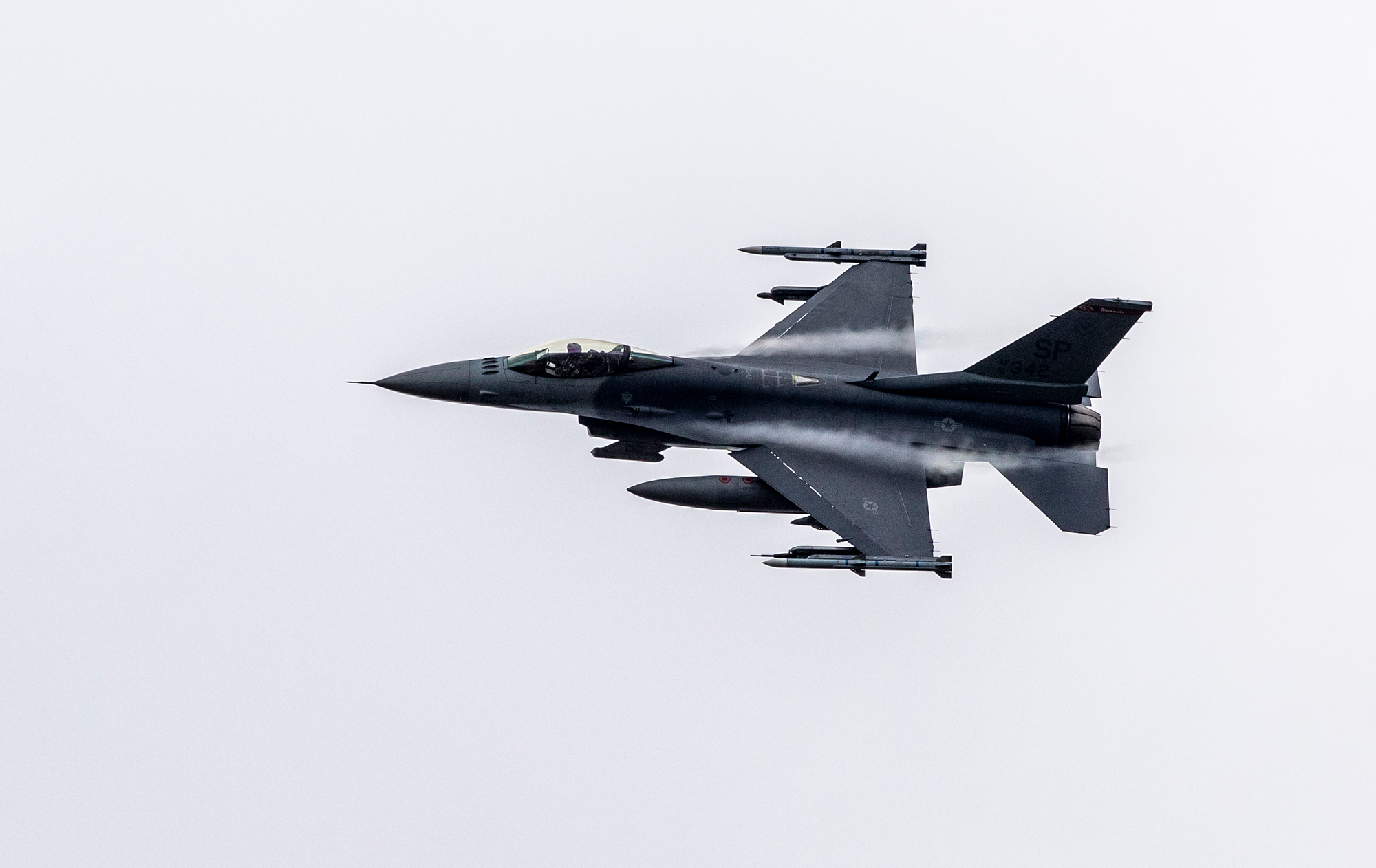 Photo: The Fighter Coalition was formed within the framework of Ramstein and is preparing to receive F-16s (Getty Images)
Photo: The Fighter Coalition was formed within the framework of Ramstein and is preparing to receive F-16s (Getty Images)
At the last meeting in 2023, on November 22, a Ground-based Air Defense Coalition (20 countries) was formed, led by Germany and France. The German side announced a $1.4 billion package with IRIS-T systems, missiles, and one Patriot system. The UK and Norway, as part of the Maritime Coalition, said they would look for ways to strengthen security in the Black Sea. The allies discussed how to overcome the shortage of artillery shells.
The meeting on January 23, 2024, was held without the announcement of a long list of aid packages. However, Germany announced the delivery of six Sea King Mk41 helicopters, and Canada announced the delivery of 10 multipurpose boats from Zodiac Hurricane Technologies (by the end of spring). In addition, NATO signed a contract for 220,000 rounds of ammunition, the UK announced a military package worth 2.5 billion pounds, and France announced the delivery of 40 SCALP missiles, hundreds of bombs, and more than 70 Caesar artillery systems.
The last meeting to date took place last week, on February 14. The main outcomes were the launch of the Integrated Air and Missile Defense Coalition led by France, the United States, and Germany, the Drone Coalition, and the Mine Action Coalition. Canada will provide $44 million for the purchase of spare parts, weapons, and ammunition for the F-16. Chief of the Defense Intelligence of Ukraine Kyrylo Budanov says that pilots are completing training and that the fighters may appear in Ukrainian skies in the spring.
First year of sanctions. Freezing of reserves, blow to oil and gold, Putin and company on list
A new round of tougher sanctions is associated with a full-scale war. Western countries introduced them in stages and assigned them numbers. Over two years, a total of 13 packages have been introduced, and the last one will be symbolically approved today.
The first package concerned Russian recognition of the so-called Luhansk and Donetsk People's Republics. On February 21, 2022, the United States, Britain, Australia, Canada, and the EU began imposing sanctions on Russian banks, including those that finance the military-industrial complex. Germany suspended the certification of Nord Stream 2. Other restrictions were imposed on sovereign debt, MPs, the Central Bank, and businessmen close to Vladimir Putin, such as Gennadiy Timchenko, Boris and Igor Rotenberg.
The second package was introduced immediately after the invasion. It included personal sanctions against Putin (including travel bans and asset freezes) and exports of oil refining technology. Companies from the Russian Federation were restricted from making payments in dollars, euros, pounds, and yen. Some countries stopped issuing visas to Russian citizens, and on February 25, the United States, the European Union, and others began to close the skies to Russian aviation.
Immediately afterward, on February 26, the third package was announced. These sanctions froze the Central Bank of Russia's reserves in the banks of the G7 countries, canceled the "golden passport" program for Russians, and disconnected some banks from the SWIFT international payment system. London announced the preparation of a blacklist of Russian wealthy individuals, and the European Union banned the broadcasting of propaganda media Russia Today and Sputnik.
 Photo: The first packages included sanctions against Vladimir Putin, his entourage, oligarchs, banks, and some sectors of the economy (Getty Images)
Photo: The first packages included sanctions against Vladimir Putin, his entourage, oligarchs, banks, and some sectors of the economy (Getty Images)
The fourth package, introduced in mid-March, expanded the lists of Russians and companies involved in the aggression against Ukraine. The sanctions included a ban on exports of luxury goods and new investments in the energy sector. Australia imposed restrictions on the elite and oligarchs close to Putin, while the United States and the European Union started talking about an oil embargo and blocking public debt payments.
Package 5 was announced on April 5, 2022. In particular, the European Union banned coal imports, Russian ships entering its ports, exports of quantum computers and high-tech semiconductors, and imports of wood, seeds, alcohol, and seafood. The United States has officially suspended information exchange with the Russian tax authorities.
The ban on coal imports affected a quarter of all Russian exports, which amounted to a loss of approximately €8 billion in revenue per year.
On June 3, the EU Council approved the sixth package. It envisaged a phased phase-out of imports of crude oil and some petroleum products over 6-8 months. There is a temporary exception for countries that receive Russian oil through pipelines and are dependent on Russia, such as Hungary. The largest banks were disconnected from SWIFT, three more TV channels were banned, and chemical exports were banned.
The following month, on July 21, as part of the seventh package of sanctions, the EU banned imports of Russian gold (as well as jewelry), tightened export controls on dual-use goods, and ordered sanctioned Russians to disclose their assets. Moscow Mayor Sergei Sobyanin, propagandist actors Vladimir Mashkov and Sergei Bezrukov, and Children's Rights Commissioner Maria Lvova-Belova, who adopted a child deported from Mariupol, were subject to personal restrictions.
The eighth package was approved on October 6, right after Russia declared Donetsk, Luhansk, Zaporizhzhia, and Kherson regions as its "territory." It included a ban on exports of weapons and military equipment, aviation goods, electronic components, and imports of steel, plastics, textiles, footwear, and leather products (worth about 7 billion euros).
In addition, the 8th package became the legal basis for the introduction of a price ceiling for Russian oil. The idea is that European companies could provide oil transportation services (maritime) if it was purchased at a price not exceeding $60 per barrel. The mechanism has been in place since December, but Russia still circumvents it by using a "shadow fleet" of tankers and mixing it with oil from other countries. In addition, Russian exports have shifted to India and China. A ban on maritime imports of Russian crude oil to the EU came into force on December 5, 2022, and an embargo on imports of petroleum products on February 5, 2023. In total, the ban covered 90% of oil imports from Russia to Europe. The United States abandoned it even earlier.
In the winter of 2022, it became clear that Russia had found a way to circumvent other sanctions. For example, in the first six months of the year, Western countries supplied $777 billion worth of microchips to Intel, AMD, and other companies through "gaskets" in Türkiye and Hong Kong.
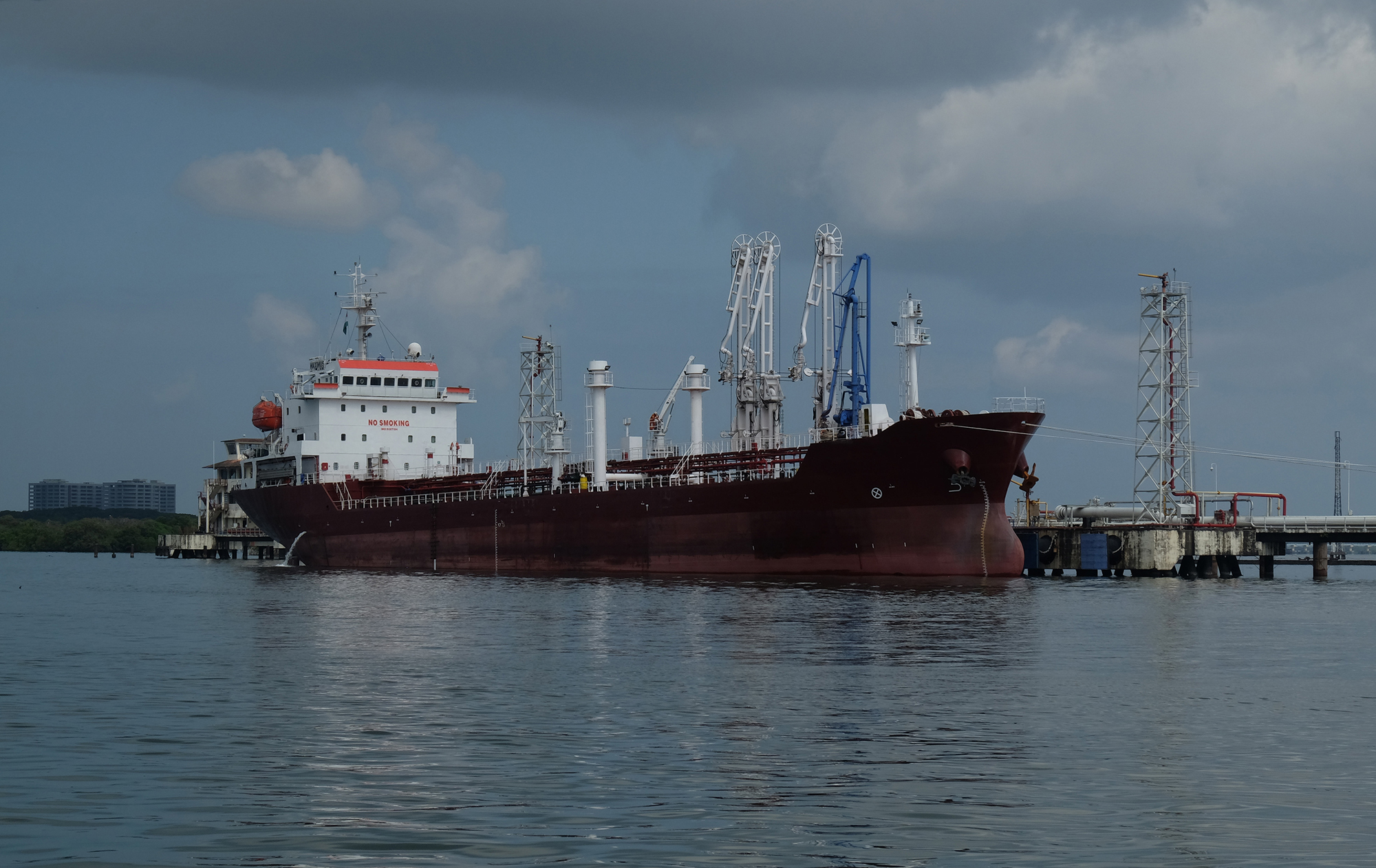
Photo: Russian oil exports to Europe have stopped due to sanctions (Getty Images)
The last package in 2022 was the ninth, approved on December 16. It included a ban on investments in the energy and mining sectors of the Russian Federation and the freezing of assets of two more banks. Many Russian ministers and deputies, family members of Ramzan Kadyrov, and oligarch Yuri Kovalchuk, who is close to Putin, the so-called "authorities" in the occupied territories, and major Russian political parties were subject to sanctions.
Additional restrictions affected the supply of engines for drones, generators, electronic components, computer equipment, night vision devices, and cameras. In February 2023, the Swiss bank Credit Suisse froze the assets of sanctioned Russians for almost $20 billion. As of February 2023, only 9% of nearly 1,500 global companies had left the Russian market.
Slowdown in sanctions. Only three packages in 2023 and what will be included in next one
Western countries introduced the tenth package on February 25, 2023. The ban includes the export of electronic components used in Russian weapons systems (UAVs, missiles, etc.), thermal imaging cameras, trucks, snowmobiles, bridges, cranes, machine parts, industrial plants, and the transit of dual-use goods and technologies. Sanctions were also imposed against nearly 100 companies associated with the Russian military-industrial complex, including Iranian companies that supply the Shahids. The list of individuals was expanded to include representatives of the Wagner PMC, the Federation Council, the State Duma, and other institutions.
In March, the European Commission announced the 11th package, mainly aimed at combating sanctions circumvention. In addition, Norway added more than 1,500 individuals and legal entities to its lists, and Lithuania announced its intention to confiscate cars with Russian registration.
The final package was agreed on December 18, 2023. It prohibits direct or indirect imports of diamonds from Russia, re-export of sensitive goods and technologies, and expands the list of prohibited goods to include lithium batteries, thermostats, DC motors, and servo motors for UAVs. Additional restrictions were imposed on cast iron, copper, and aluminum wire, pipes, and rolled products. Imports of liquefied natural gas were also banned with a 12-month transition period and additional measures were approved to ensure compliance with the oil price ceiling.
 Photo: In 2023, sanctions hit liquefied natural gas from Russia (Russian media)
Photo: In 2023, sanctions hit liquefied natural gas from Russia (Russian media)
The latest, 13th package of sanctions against Russia is being introduced by European partners on the eve of the second anniversary of the invasion. It is being called the weakest after it became known that it will not include new bans on Russian exports or imports.
The new package includes about 200 legal entities and individuals. According to the head of European diplomacy, Josep Borrell, more restrictions have been imposed on organizations involved in circumventing sanctions, as well as on the defense and military sectors. The sanctions also apply to those involved in the illegal deportation of Ukrainian children.
Sanctions effect. How restrictions have affected Russian economy
According to the analysis of the Kyiv School of Economics (KSE), the Russian economy is under stress due to the war and sanctions. The external environment has become less favorable. The most important change in the macroeconomic situation over the past year has been a sharp deterioration in the external balance. In particular, in 2023, total merchandise exports amounted to $423 billion, a 29% decrease compared to 2022.
This contributed to a much smaller trade surplus of $118 billion (-63%) and a current account deficit of $50 billion (-79%), which fundamentally undermines macroeconomic stability. As a result of the sharp decline in foreign currency inflows since the fall of 2022, the ruble has lost about 40% of its value against the euro and the US dollar.
In October-December 2023, more than 98% of Russia's marine crude oil exports were likely to be sold at more than $60 per barrel. This indicates very low compliance with the price ceiling. However, there are signs that the tightening of sanctions in the energy sector is having an effect.
"The discount on Russian oil compared to Brent, which is a key mechanism for reducing export revenues, has started to increase again in recent months. If similar steps are taken in the coming months, Russia's external balance could approach a critically low level," the KSE says.
Foreign trade has stabilized at a new baseline of $35 billion in exports and $25 billion in imports per month. The decline in exports due to sanctions and lower energy prices is costing Russia about $14 billion a month. KSE analysts believe that if price caps are tightened, foreign currency inflows could reach a critically low level as early as 2024.
Higher global prices have led to a revision of the discount on Russian oil. This allowed Russia to receive an additional $30 billion from exports in 2023 compared to the original scenario. It is expected that prices and export revenues will return to the forecast in the first quarter of 2024.
"We estimate that oil and gas exports will amount to $228 billion in 2023 and will decline to $186 billion in 2024 and $176 billion in 2025... It is crucial to increase the pressure, as a difference of $10 per barrel reduces export revenues by about $25-30 billion per year," the analysis says.
Stable public finances allow Moscow to implement a plan to sharply increase military spending - this year, it intends to spend $100 billion on military needs (+68% over last year).
The total assets of the National Welfare Fund (NWF) amounted to $133.4 billion at the end of 2023. Since the beginning of the full-scale invasion, Russia has spent almost half of its liquid assets and depleted all foreign currency reserves. The remaining liquid assets are assets in yuan and gold totaling $56 billion. And this will complicate budget financing through the NWF.
Before the invasion, Russia had international reserves of $634 billion. According to KSE estimates, about $298 billion is currently blocked due to sanctions. Also, since February 2022, emigration has increased significantly - to 817-922 thousand people, which is why the economy is facing a labor shortage.
Attempts to restore the economy hide major vulnerabilities. The Russian economy is benefiting from a large-scale fiscal stimulus related to the war, which will become even stronger this year. The sharp rise in spending could add about 2.5% to GDP growth in 2024.
"Thus, it is not surprising that economic activity has almost fully recovered from the initial shock caused by the war and sanctions. However, the underlying fundamentals of the economy are weak, and problems will eventually surface," the KSE says.
